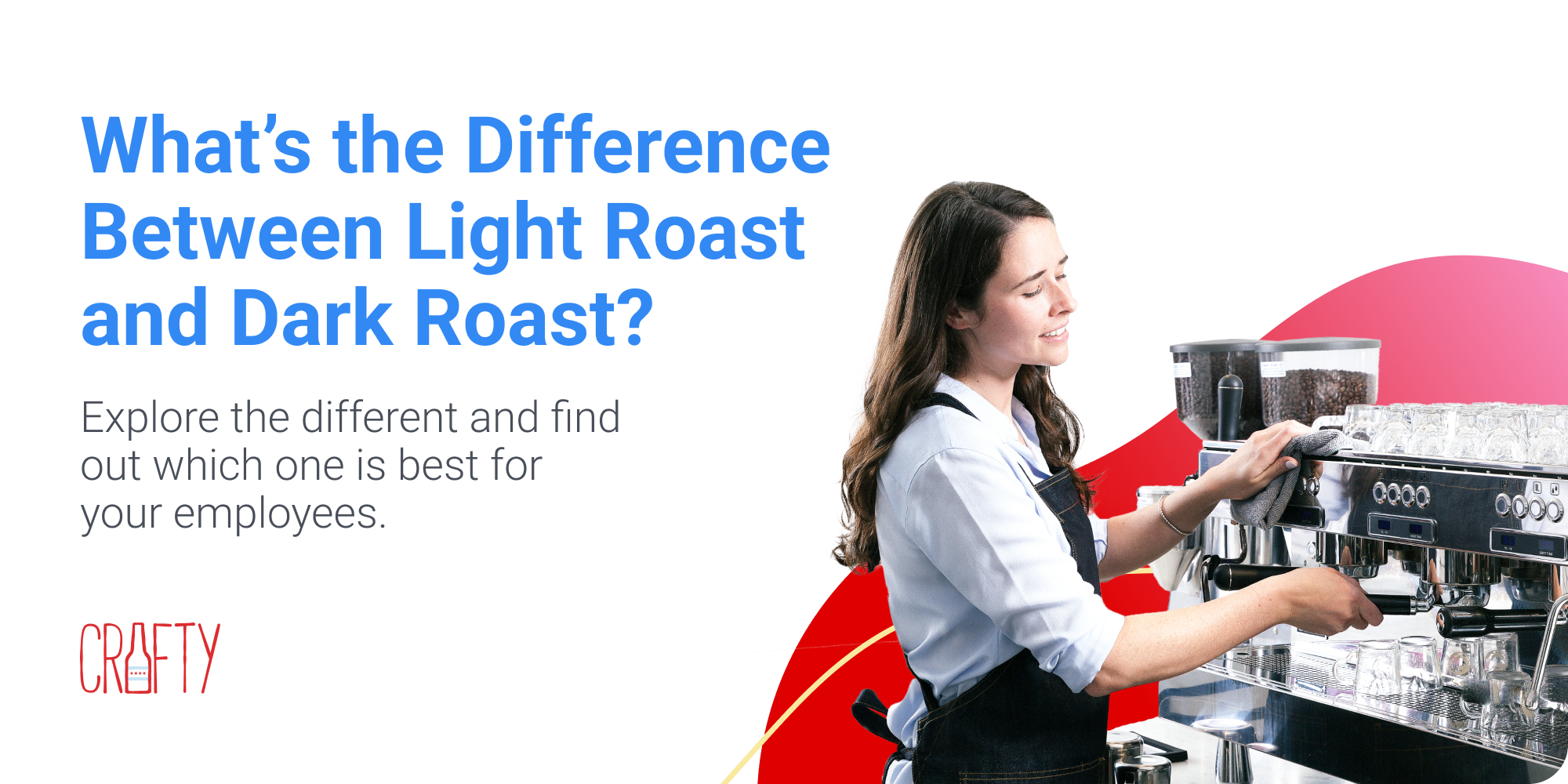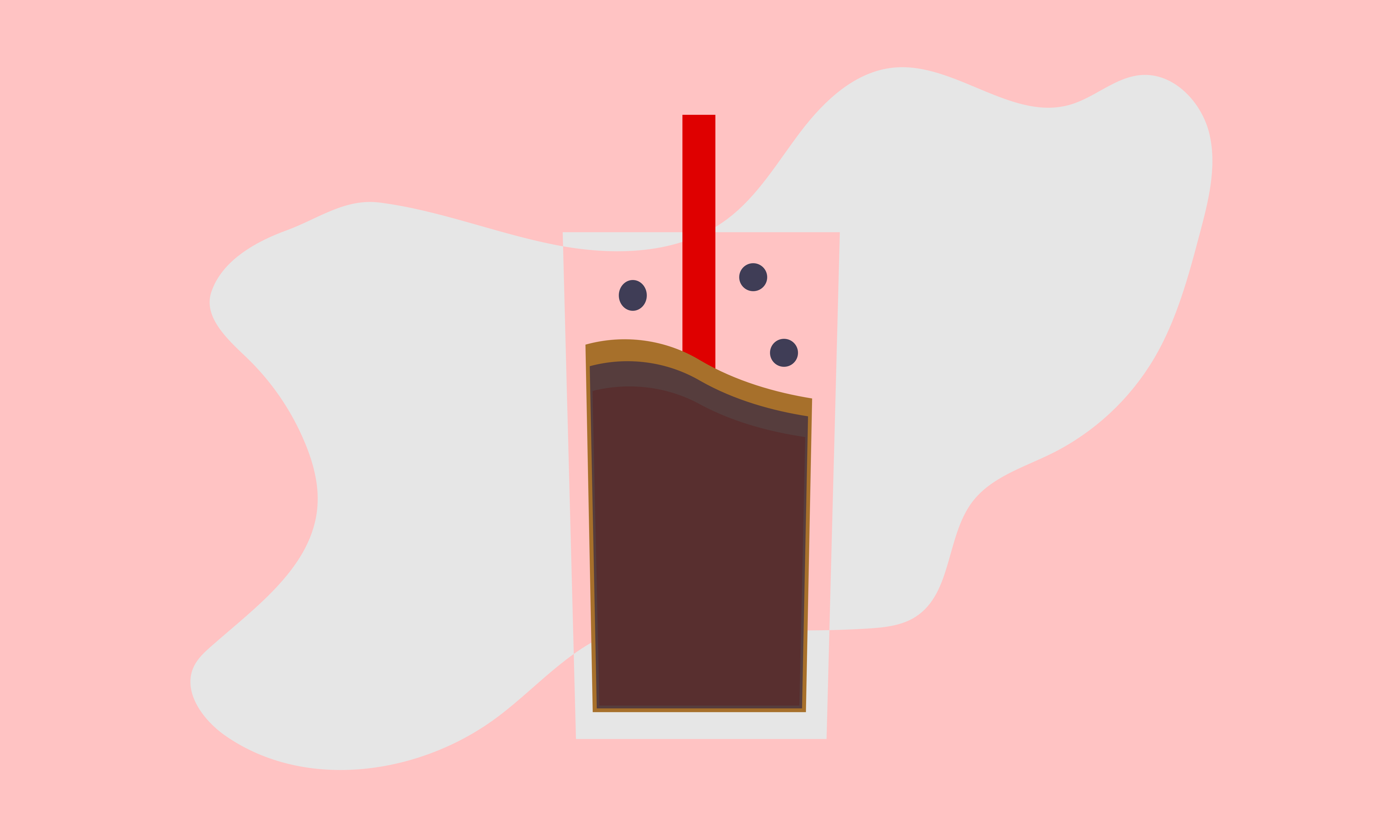What’s the Difference Between Light Roast vs Dark Roast Coffee and Which Is Best for Office Delivery?

We love coffee. We know you do too. Is there anything more important? No. The answer is: no, there isn’t. We have coffee. You need coffee. It’s a beautiful relationship.
Whether you have an in-office café with real Baristas, or you have an automatic office coffee maker, or you are using a good old fashioned drip corporate coffee machine, we want to make sure you are getting great coffee. And Boy! There are a lot of options.
We think it’s important to stay local and work together with the cool people doing the cool things in our own neighborhood. So we have a bunch of coffee from local roasters, and as we grow, our offerings grow! Our top coffee people have vetted all the roasters that we work with to make sure that they are giving only the best! We are also making sure we have a large variety of options for the large variety of tastes out there!
And speaking of taste! Some people know exactly what they like; what roast, blend, origin, or farmer. Some are a little less specific: strong. Maybe you don’t know what you like. Don’t worry - we won’t judge.
No matter what you or anyone in your office likes, Crafty has something for you. We can also help you find out what you like as part of our office coffee service.
So let’s talk about the most prominent decider of coffee flavor: The Roast!
What Makes the Best Office Coffee Service? This Ain’t a Celebrity Roast
Light, Medium, Dark; breakfast, espresso, cinnamon; Italian, French, Vienna. These are all common roast types that you might find on any old bag of coffee. Essentially it means how long a green bean has been exposed to heat and cooked.
In the Coffee Biz, coffee beans (really cherry pits!) are kept in a green state, sold to roasters, then roasted, packaged and sold. Roasters evaluate the beans to decide what they think is the best roast to unlock the fullest flavor potential of a given crop. Most large scale roasters use drum roasting; they put a bunch of beans in a rotating drum with hot air and let it cook. Once it’s at the desired roast level, they dump the now brown beans into a cooling pan.
"Roasting is an art and a science, and there's no take backsies."
- Crafty's Top Coffee People
You certainly can’t un-roast, and it’s incredibly hard to accurately re-roast if they decide they want to go darker. This means that a roaster has to be very skilled at listening to the coffee as it cooks. Specifically, they listen to the “Cracks.” The cracks tell the roaster how cooked it is and the dark. They happen because the coffee bean has expanded and its moisture has begun to evaporate. This moisture forms steam, and then pressure, that forces the beans to crack open.
Light and Medium roasts are stopped sometime after the first crack, while most dark roasts go slightly past the second crack. In the wild west world of coffee, there are no global standards. That means that every roaster has their own scale of what is considered light and what is dark. One roaster's medium roast may be a different roaster's light roast; and one roaster's dark roast may be someone else's burnt roast.
Dark Ages = Dark Roast
In the old days, all coffee was dark roast coffee.
There were no high tech thermometer and digital temperature readouts that let the roaster know what was going on inside the roasting drum. There was fire. There were also so many issues with shipping and transportation that using high heat to fully cook the beans helped to mask and remove any flavors of mold, pest infestation, or any of the other million things that could have gone wrong from the time the cherry was harvested to when it got to the roaster.
Things are much different now.
Shipping green coffee has come such a long way, and is of course much faster. In every step of the growing, harvesting, and transportation process, technology has changed so much that the coffee we drink now is so different than what Europeans were drinking 100 years ago. Now, instead of burning out all the unique flavor and creating uniform flavors, roasters are able to highlight the unique characteristics of different continents, regions, weather conditions, and even growing elevations!
So once a roaster decides to make a dark roast, what does that mean for you?
As in all cooking processes, caramelization is key. During dark roasting, the sugars in the coffee are typically fully cooked and that yields flavors of chocolate, caramel, and bitterness. Bitterness in coffee is predominantly due to beans being roasted to a dark or burnt level.
Another quality that is most commonly experienced with dark roasted coffee is a full-body mouthfeel. “Mouthfeel” means how the coffee feels on your tongue. Full-body just means that the coffee has more weight and substance than something that is thin or light-body. This weight is because of the extra oil in the coffee!
Roasting causes a breakdown of the cell walls inside the bean and releases more natural oils than lighter roasting. The tell-tale signs of a dark roast bean is that it’s dark brown and oily.
Let There Be Light (Roast)!
Most roasters decide to make a light roast when there are some unique flavor characteristics of the coffee that they know will be highlighted in a lighter roast.
Essentially, they are going to lightly cook the beans to only begin the caramelization process and release some oils - much less so than the dark roast. This will save the sugars and amino acids and result in a more acidic flavor.
For coffee, when a flavor is “acidic” it means bright, and sometimes tart, but shouldn’t be harsh. Another key flavor is fruit. Often in light roasts the original fruit flavor of the coffee cherry is preserved and reflected in the cup. Kenya coffees taste like grapefruit; Ethiopia coffees taste like blueberry; Colombia coffee tastes like spices and stone fruit. Less oils in the lighter roasts mean a light body.
MythCrushers™
OK. Time to bust a myth: some folks think that a dark roast means more caffeine.
It’s certainly a stronger flavor! And more dense. But in truth, the darker the roast, the less caffeine in the coffee.
That’s because some caffeine actually gets burned out of the bean the longer it is in the roasting process. But it’s not all that much. While, technically, light roast does have more caffeine, it’s such a small difference that we don’t really feel it - beyond the psychosomatic response.
So there you have it. Roasts. Crafty has so many different roasts from many different roasters! If you already know what you like - awesome! If you don’t - well, we hope that you are now armed with knowledge to help you go and explore the vast world of coffee to find what you like!
And our last pro tip: taste your coffee before putting cream and sugar in. Especially if it’s a light roast, it might already be sweet enough, and you might mute the flavors with all the milk.
Coffee!
What to read next!
NOURISH • COFFEE
What's the difference between nitro cold brew and iced coffee
Nitro cold brew, regular cold brew, and iced coffee aren't the same! Let's take a look at what makes...

